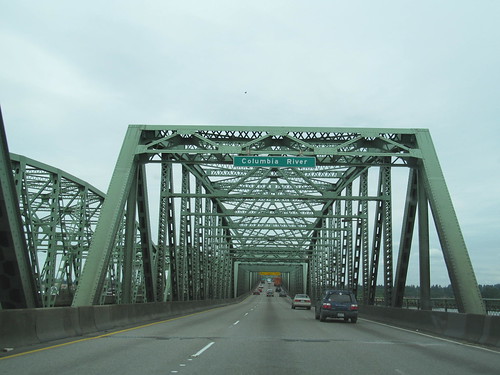
Oregon DOT provides a wake up call for local leaders in other states

In a move that should raise alarm bells for local leaders in other states, last week the Oregon Department of Transportation decided where to spend nearly $200 million in new money from last year’s FAST Act on their road system with limited to zero public engagement.
The FAST Act, the five-year transportation bill passed by Congress in late 2015, provided a level of funding certainty for state transportation programs that they’ve not had in years. Thanks to a $70 billion transfer from general taxpayer funds into the Highway Trust Fund, the FAST Act also provided a slight increase in funding for each state. This followed on the heels of $75 billion in transfers total over the prior seven years, just to keep the trust fund solvent.
Yet simply funneling more money into the same system won’t necessarily ensure better outcomes for the taxpayers’ investment or that local priorities will be addressed, and Oregon’s actions could be a preview of what might happen in countless other states, deciding not to equitably distribute the new funds to state and local priorities.
Rather than improve the underlying policies that directs each state’s transportation investments, Congress chose to largely direct the FAST Act’s increased funding into new freight programs, the largest of which is being distributed to states by a formula wholly unrelated to freight needs or merit. (This was one of the provisions we called out in our post covering ten things to know about the FAST Act. –Ed.)
This new National Highway Freight Program will dole out more than $1 billion per year to state DOTs with zero relation to the value or tonnage of the freight moved within its borders. It also predetermines that the solution to any freight problem is highway-related by directing all but 10 percent of each state’s funding to highway development only, disregarding the fact that these funds were not collected from gas taxes.
In addition, the increase in funds in the main highway programs are also directed largely to state DOT owned roads (interstates and highways). Thus, local governments must be prepared to ensure their priorities are addressed and the states share in their newfound resources, however large those may be.
Case in point: Oregon.
As Bike Portland originally reported back on 3/17, The Oregon Department of Transportation (ODOT), with the approval of its Transportation Commission, programmed $196 million in new funding from the FAST Act on Thursday, March 17. While ODOT is correct that the majority of its new funding is from the highway freight formula program, the agency has misinformed (pdf) their audience by stating the funds must be allocated to “freight-related projects on high-volume, high-priority truck freight routes, primarily the Interstate.”
Congress provides ODOT, and every other state, great flexibility to direct federal highway dollars to priority projects — state or local, highway or non-highway. Every state has the flexibility to transfer 50 percent of its funding for a highway program to a separate highway program such as the highly flexible and locally accessible Surface Transportation Program, which can be used on almost any type of important project.
While nearly 40 percent of the additional $200 million in Oregon will support fix-it-first projects – a priority that Transportation for America supports —95 percent of the new funding will likely go to state-owned highways and almost nothing is done to improve transparency and accountability for the public. To wit: the list of project types receiving funds does not provide a discussion or rationale for which projects will receive the new funding or why any particular project category received funding.
The murky process of picking projects in a way that is nearly impossible for the public to decipher will continue.
ODOT will not begin spending the nearly $200 million in newly programmed funds until 2018, which provides Oregon’s local leaders two years to build their case to receive a greater portion of the new funding from the FAST Act for their priorities.
But today and tomorrow, Oregon’s example illustrates why local leaders in other states need to proactively engage their state representatives and DOT to ensure their state’s new funding from the FAST Act is shared and supports both local and state priorities.
Click here to review the amount of highway funding directed to your state DOT from the FAST Act




